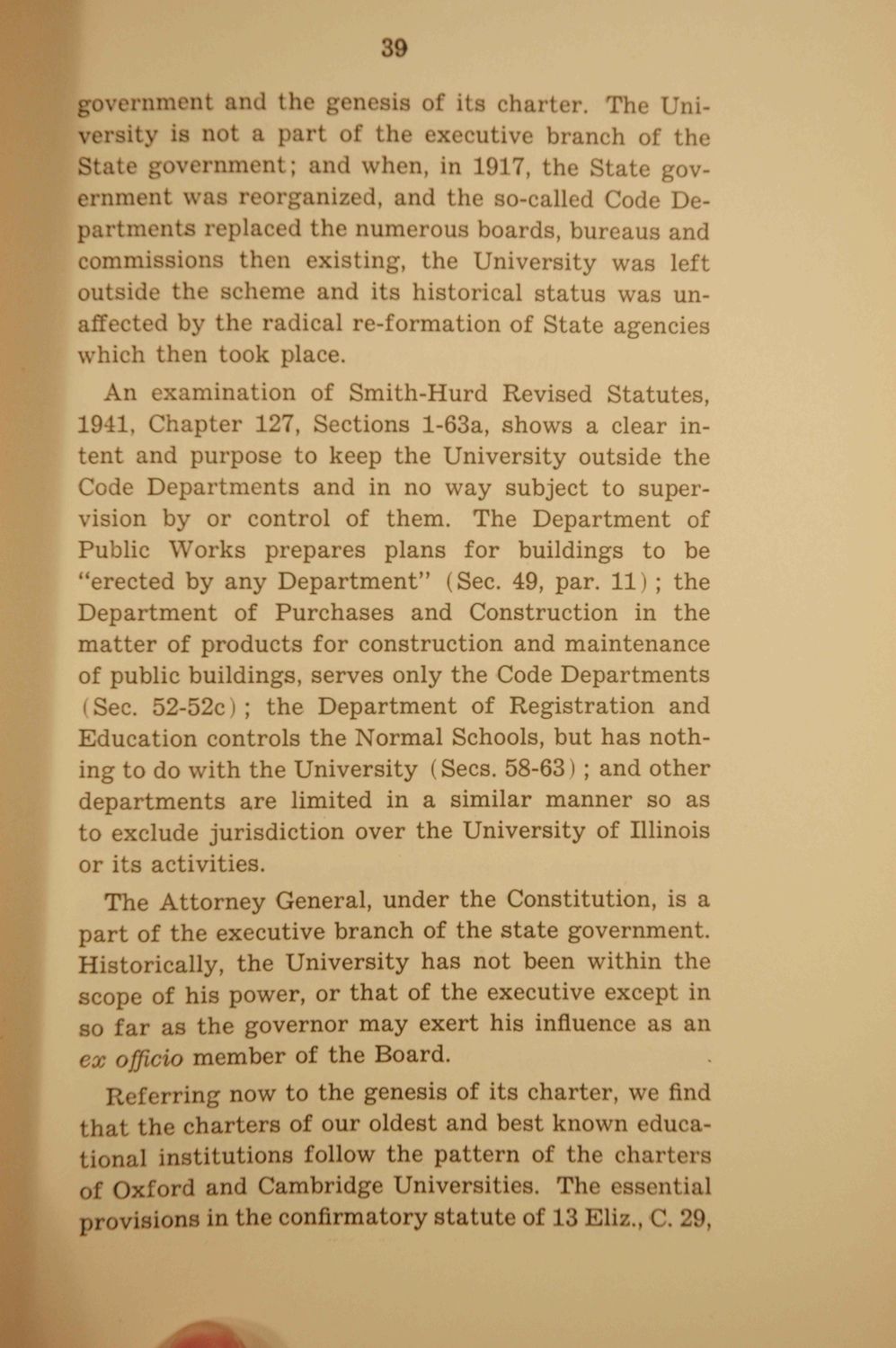| |
| |
Caption: Booklet - UI Charter of Freedom (1942)
This is a reduced-resolution page image for fast online browsing.

EXTRACTED TEXT FROM PAGE:
39 wernment and the gem la of its charter. The University is not a part o\' the executive branch of th S e government; and when, in 1917, th State govI rnment was reorganized, and the so-called Cod* Departments replaced the num- MS boards, bureaus and commissions then existing, the University was left outside the scheme and its historical status was unaffected by the radical re-formation of State agencies which then took place. An examination of Smith-Hurd Revised Statutes, 1941, Chapter 127, Sections l-63a, shows a clear intent and purpose to keep the University outside the Code Departments and in no way subject to supervision by or control of them. The Department of Public Works prepares plans for buildings to be erected by any Department" (Sec. 49, par. I l l ; the Department of Purchases and Construction in the matter of products for construction and maintenance of public buildings, serves only the Code Departments Sec. 52-52c I ; the Department of Registration and Education controls the Normal Schools, but has nothing to do with the University (Sees. 58-63) ; and other departments are limited in a similar manner so as to exclude jurisdiction over the University of Illinois or its activities. The Attorney General, under the Constitution, is a p a r t of the executive branch of the state government. Historically, the University has not been within the scope of his power, or t h a t of the executive except in so far as the governor may exert his influence as an ex officio member of the Board. Referring now to the genesis of its charter, we find that the charters of our oldest and best known educational institutions follow the pattern of the charter of Oxford and Cambridge Universities. The essentia] provisions in the confirmatory statute of 13 Eliz., C. 20,
| |